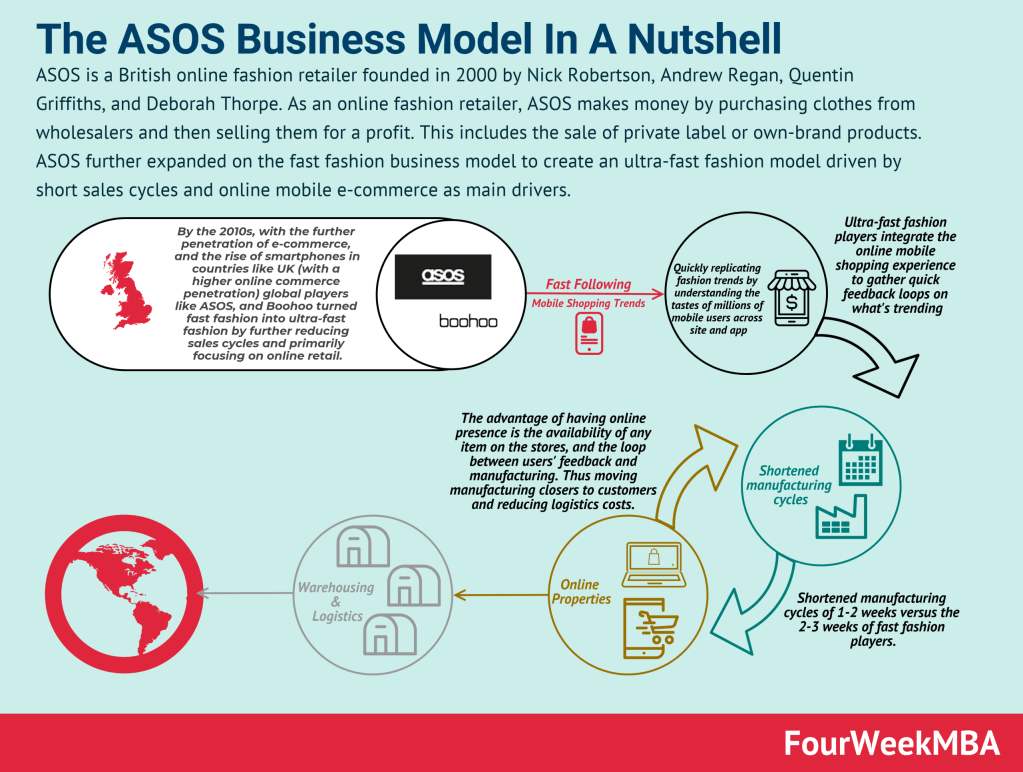The online fashion retailer Asos has disclosed significant financial losses in its latest financial statements. The company has reported a loss of £87.4m in the six months ending February, as compared to a profit of £14.8m in the same period last year.
The company feels that this downturn is due to shoppers reducing their spending and rising living costs. Although the company has faced an unfavourable trading environment, Asos is still optimistic that it will return to profitability within the next six months.
What did the shift to online shopping do for Asos, and how is it changing?
Asos is an important company in the online retail industry, and has exemplified the move towards online shopping. The company experienced substantial growth during the Covid-19 pandemic due to an increase in online shopping, mainly by younger adults while under lockdown.
However, despite the initial boost caused by pandemic-related closures, the growth of online sales for retail companies, like Asos, has slowed down due to the reopening of high-street shops. Also, the increasing expenses of everyday living have been a challenge for Asos in both the United Kingdom and United States markets, resulting in decreased purchasing ability for customers.
In present times, customers are finding it harder and harder to make non-essential purchases due to the increase in energy costs and food prices, which have put a strain on household budgets.
ASOS reports first-half loss as shoppers cut back https://t.co/3PWWscJcsj pic.twitter.com/ANPSxsicRi
— Reuters (@Reuters) May 10, 2023
To what extent could these losses have been predicted?
Being one of the world’s biggest fashion retailers, Asos had previously indicated that they were expecting losses due to the expenses associated with clearing out large volumes of stock.
The company underwent a significant restructuring last year to address the stock burden. However, the latest losses are only adding to the £32m hit already revealed in the previous year’s results.
Asos announced, in the UK, that although their sales have surpassed pre-pandemic levels, the trading is still aggressively fluctuating on a monthly basis. The company first experienced a significant decline in sales volumes in September, due to negative news about rising living costs and again in December, which was because of the Royal Mail postal strikes.
Furthermore, outside of the UK and US, the retailer’s sales in Europe did not increase and its sales in other parts of the world decreased by 12% during the six months leading up to February’s end.
How have competitors fared compared to Asos?
Other online fashion retailers, who ultimately compete with Asos, have also faced intense competition due to, and since, the Covid-19 pandemic.
Since high-street shops have reopened, they have been successfully competing with online sales, resulting in a decrease in e-commerce sales that were once the primary channel for retail sales during the peak of the pandemic.
The Covid-19 pandemic, along with the cost of living crisis, has fundamentally changed the world, causing high-profile global brands, like Asos, to adjust their operations and sales strategies.

What could Asos do to build up sales?
The main priority for Asos is to build up sales in the US and other parts of the world, as those markets are still underperforming compared to their UK performance. To further target potential customers outside of the UK, Asos has recently added new product lines, such as beauty, lingerie and activewear.
The company has also been investing in the expansion of its digital platform, such as developing mobile applications and improving customer service. Additionally, Asos has heavily invested in marketing initiatives to reach out to potential customers with an impactful message.
coincidence that #ASOS dropped heavily from day 1 on the 12 month countdown to when the bond conversions can happen? pic.twitter.com/Uyzp71s3GM
— It Is A Game (@itisagame1) May 30, 2023
Conclusion
The financial performance of Asos reflects the challenges that numerous businesses have encountered amid the Covid-19 pandemic. Also, with the cost of living having risen, it’s led consumers to be more careful with their spending habits, no longer splashing out on non-essential items.
Despite facing these challenges, Asos is still remaining confident that it will again be profitable in the next six months. The company has a strong brand and a dedicated customer base that has been loyal throughout the pandemic and other struggles.
Furthermore, Asos’s ability to learn and adapt to its changed surroundings will be essential in the future if it hopes to remain successful. By investing in the expansion of its digital platform and pursuing marketing initiatives, Asos is taking all the necessary steps towards weathering and overcoming the storm caused by the pandemic and rising living costs.









